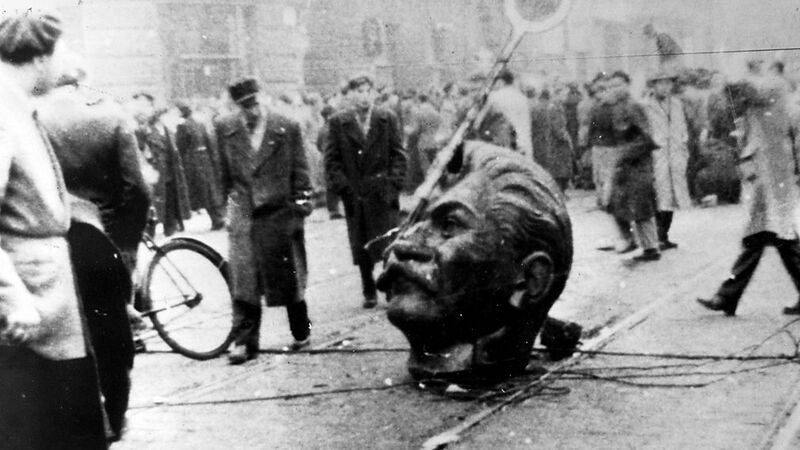File:P03hb3wv.jpg

A statue of Stalin being vandalised during the Hungarian uprising in 1956. [1]
Original filename: https://ichef.bbci.co.uk/images/ic/1008xn/p03hb3wv.jpg
Description
https://www.bbc.co.uk/bitesize/guides/zghnqhv/revision/3 GCSE CCEA The Hungarian uprising A public uprising in Hungary against the USSR leads to a bloodshed. What caused it? And what was the effect on international relations? Part of History International relations, 1945-2003
The events of the uprising Photograph of a statue of Stalin being vandalised during the Hungarian uprising in 1956.
A statue of Stalin being vandalised during the Hungarian uprising in 1956
In June 1956, the Hungarian people began to protest against Rákosi’s regime, and Moscow replaced him with Ernő Gerő.
He was no more popular and on 23 October 1956, students took to the streets and were supported by the workers and the Hungarian army.
As riots spread, the Soviets agreed to the formation of a new government under the leadership of the more liberal Imre Nagy - a popular communist leader.
On 28 October, Soviet tanks began to withdraw and many Hungarians were now confident of American support. This led to more pressure for a series of sweeping reforms. Nagy's reforms
Nagy’s reforms included:
free elections to choose a democratic government;
an impartial legal system to ensure fair trials;
the total withdrawal of Soviet troops from Hungary;
farmers to be allowed private ownership of their land (instead of it being state owned);
Hungary to leave the Warsaw Pact and declare neutrality in the Cold War.
On 1 November, Imre Nagy announced the decision to introduce free elections and to leave the Warsaw Pact.
However, the Soviets could not allow Hungary to overthrow its government and leave the Warsaw Pact as such an action would destroy the unity of the Soviet bloc and weaken the defences of the USSR.
References
- ↑ https://www.bbc.co.uk/bitesize/guides/zghnqhv/revision/3 GCSE CCEA The Hungarian uprising A public uprising in Hungary against the USSR leads to a bloodshed. What caused it? And what was the effect on international relations? Part of History International relations, 1945-2003
File history
Click on a date/time to view the file as it appeared at that time.
| Date/Time | Thumbnail | Dimensions | User | Comment | |
|---|---|---|---|---|---|
| current | 20:57, 11 July 2020 |  | 1,008 × 567 (98 KB) | T (talk | contribs) |
- You cannot overwrite this file.
File usage
The following page links to this file: